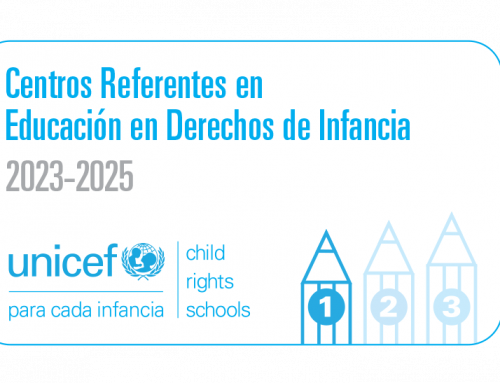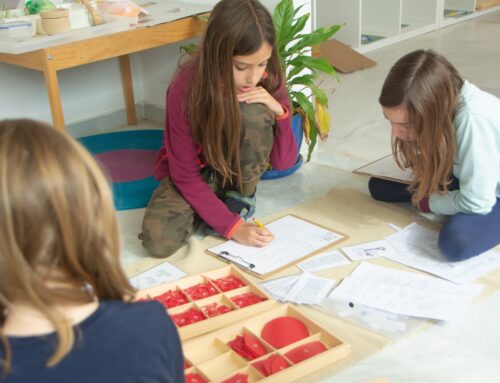When the screens are turned on and children are “turned off”
Screen addiction does not exist academically, in fact when there is a problem with addictive behavior disorder it is to some more specific tool, use of social networks, access to inappropriate content on the internet, addiction to video games, etc.
There are not so many cases in which an excessive use of screens ends up in addictive behavior disorder, but in recent years it is increasing significantly. Currently, the most studied disorder is video game disorder, which has been included as a clinical entity in the ICD11. In the clinical setting, the set of addictions that impact on different spheres of the child’s health (rest, socialization, emotions, etc.) related to the use of digital content (social networks, video games, etc.) is called CAI, but for this to occur, there must be a psychopathological presence. Thus, it is necessary to differentiate between use and abuse (sometimes risky), and, on the other hand, addictive use.
The difference between use and abuse is a matter of time. As a family we have a lot to do. Perhaps you are already wondering what is the right time or how to know if your child is abusing.
The World Health rganization recognizes the health risks of excessive use of screens for children and indicates the exposure time that in their opinion does not negatively influence health: zero exposure up to 2 years old, one hour a day from 2 to 5 years old, and from 5 to 17 years old, only two hours a day.

The Canadian Pediatric Society, to cite other references, establishes similar advice, placing more emphasis on the review of content by adults and adding the importance of establishing consistent limits on time according to the content of what is viewed, ensuring a balance with proper rest, socialization, and physical activities.
According to a UNICEF study published in 2021, 33% of adolescents would be developing a problematic use of internet (social networks, video games, etc.) presenting these levels of depression three times higher than the rest of adolescents, and showing lower levels of emotional well-being, social integration, and satisfaction with life. This 33% increases significantly in the 3rd and 4th years of ESO.
The reality that educators and families are faced with is that it is very likely that as the child grows older, he or she will be closer to abusive use than to the recommended non-harmful use. The average consumption of screens in Spain is between 4-5 hours in children 6 years old and 7 hours from 12 years old. This is very serious if we consider that studies are currently being carried out that provide more data on the innumerable disadvantages in the development processes in children.

The side effects of the use of digital devices are not, therefore, only those already mentioned. José Luis Arévalo Chiriboga, behavioral optician-optometrist specializing in vision and learning and founder and director of the Neurovision Clinic, believes that there are many contraindications for our visual system and that it most likely has a direct impact on the child’s perception of the world, his or her social skills and, above all, on his or her learning processes. The visual system is learned and can be learned well or poorly, depending on the exposures to the environment that children make in their early years. A well-learned visual system is the one that will favor the development of language and social skills, allows the correct development of attention, concentration, and executive skills of the frontal lobe.
When children are exposed to the screen too much, their visual functions do not do the learning they need to do. Blue light near vision is continually overexerted, peripheral vision learning is limited, eye tracking skills so necessary for reading and writing are compromised, among many other contraindications. The number of children with learning difficulties has been increasing in recent years and in the words of Pilar Vergara, one of the most prestigious international behavioral optometrists, at least 40% of children with learning disabilities have visual problems.
At EducoMontessori International School part of the team has received training in Coordination of child welfare and protection, whose training mentor Guillermo Cánovas, (Director of the Observatory for the Promotion of the Healthy Use of Technology) has given us the keys to detect an abusive use of screens.
There are 10 factors that give us clues that our child may be making an abusive use of the screens or even that may involve the risk of making a pathological use of them and that are not precisely the time. Each person is different and sometimes the same exposure time affects each person differently. In addition, it is important to consider two factors that will make a difference: the personality trait and the presence of the parents.
How do we then identify that our child is already abusing that is posing a risk to his/her health or development? We will consider 10 factors:

1. Salience: The most consumed topic is the one that attracts the child’s attention, he/she is continuously focusing all his/her conversations, interests, clothes, etc. on the same thing in a very pronounced way. Very monothematic conversations.
2. Tolerance: He/she needs more and more time to experience the same sensation. Always wants more and never enough. For example, at the beginning, 1 hour of screens may seem appropriate and satisfactory, but later, as they use them continuously, 3 hours seem very little to them and they demand more time. When they are older (from 11 years old), they may be looking for content and this tolerance factor is reflected in the search for increasingly strong content on the Internet.
3. Mood changes: At home, they start to be more hostile, more conflictive, less patient, more demanding, sadder, or depressed, etc.
4. Compulsive use: Every time he sees the moment, he makes use of it. He cannot do nothing and stops doing things to have more time available for the use of video games, networks, etc.
5. Anticipation: Outside the situation of use, he does not concentrate because he already anticipates the use. For example, not being in conversations with his friends because he is thinking about what he is going to do when he plays the video game, not being attentive in class because he is thinking about it, etc.
6. Lack of self-control: They think they control the situation, they control the time of use, but they are not capable. They may make a real effort and say they are self-convinced that they will do it and always need the external stimulus of the adult to finish.
7. Conflict: Their use becomes not allowing them to carry out their day-to-day life normally. The atmosphere at home always starts to spoil for the same reason, they may lie, look for excuses not to leave the house, change the rhythms with respect to the family in a very marked way (being awake for a long time at night), etc.
8. Withdrawal syndrome: Real suffering in the child when it is decided to eliminate these stimuli or reduce the time of use drastically.
9. Relapses: They can be a time respecting and making an effort with respect to the new more controlled proposals of use, but there are relapses.
10. Emotional relief: Their abusive use brings so much dopamine and a sense of well-being that they become dependent on them to feel good.
Therefore, we must insist on keeping in mind that it is not only the time that tells us if they are being more than they can tolerate, but the set of other factors such as those described.
Each child is unique, and their parents are the ones who will know best how an hour a day or better yet only an hour on weekends affects their development. Sometimes with very little exposure time these 10 factors already appear to some children and other children may only be affected with much more exposure time.
Despite all this, when children grow up, they have a stronger need for social relationships, more pronounced demands in their studies, stronger interests in hobbies, etc. and they naturally begin to regulate themselves in a more responsible way, but in this way the family will have made a very important difference.
It is known that children between 11 and 17 years old (the age most sensitive to addictions) make an abusive use and present these warning factors in childhood and pre-adolescence, those who will most likely develop a serious, pathological use and become an addiction disorder, are those profiles with an addictive personality trait and children whose parents do not intervene.
If you want to know some tips to educate your children in the prevention and responsible use of digital devices, or strategies to intervene when there is already an abusive use of screens at home, do not miss the next article of our blog.

















